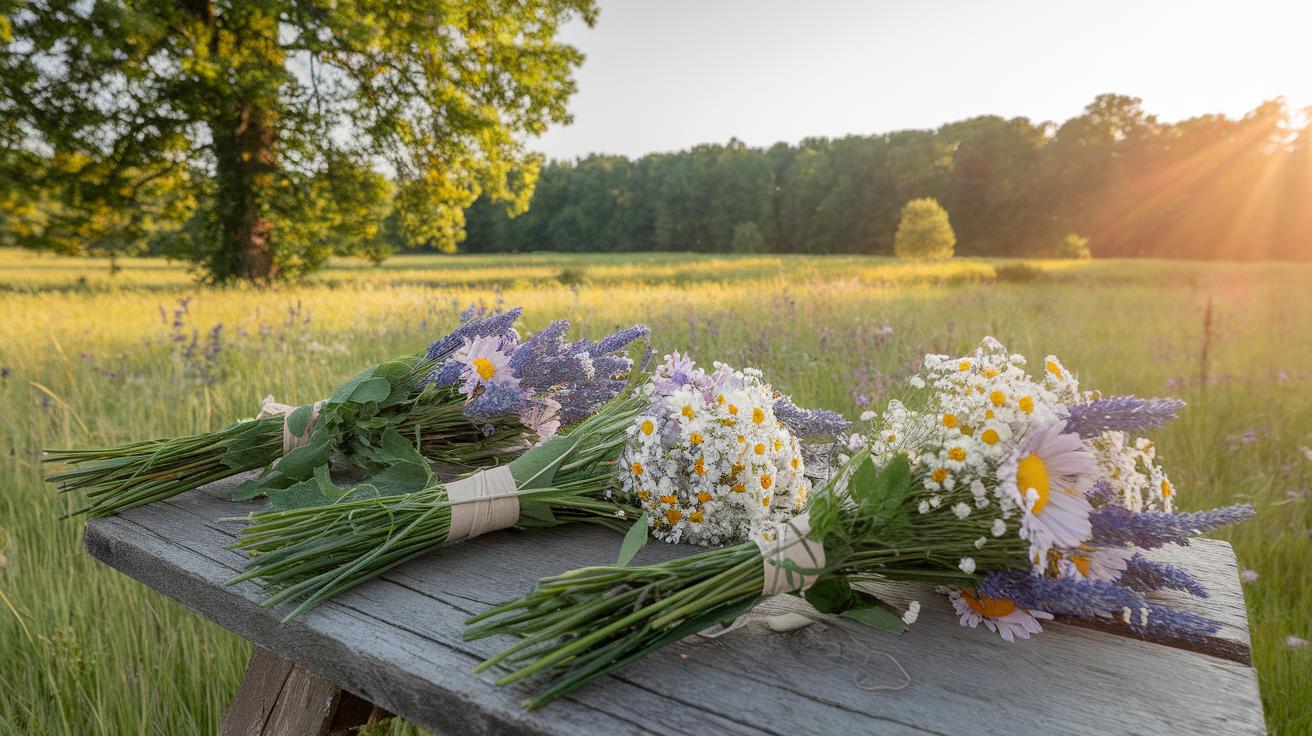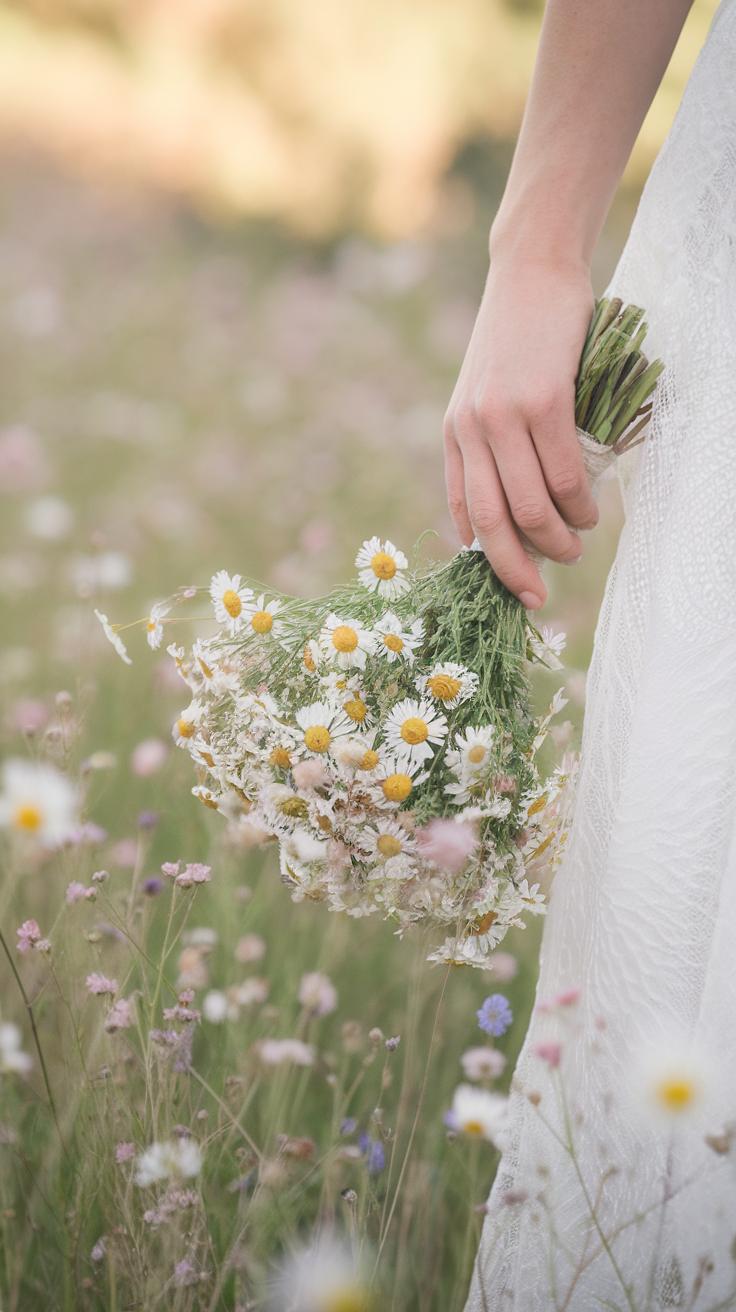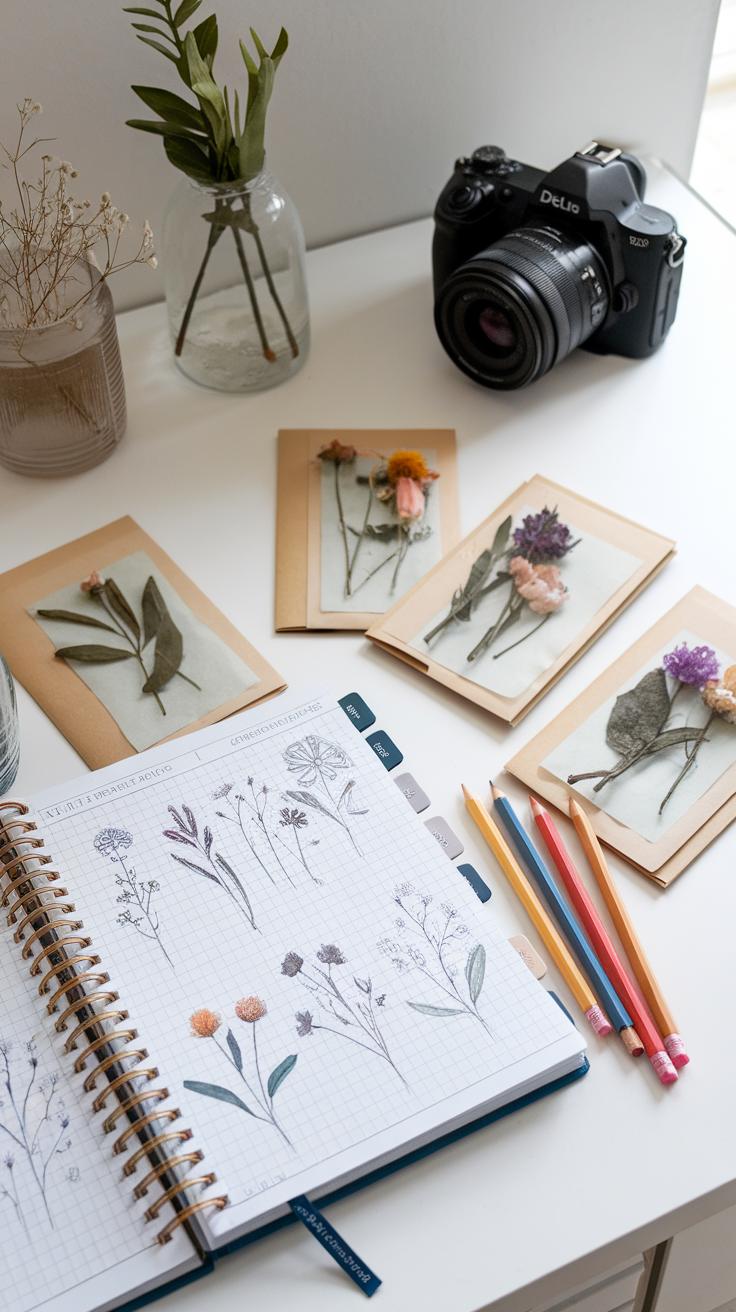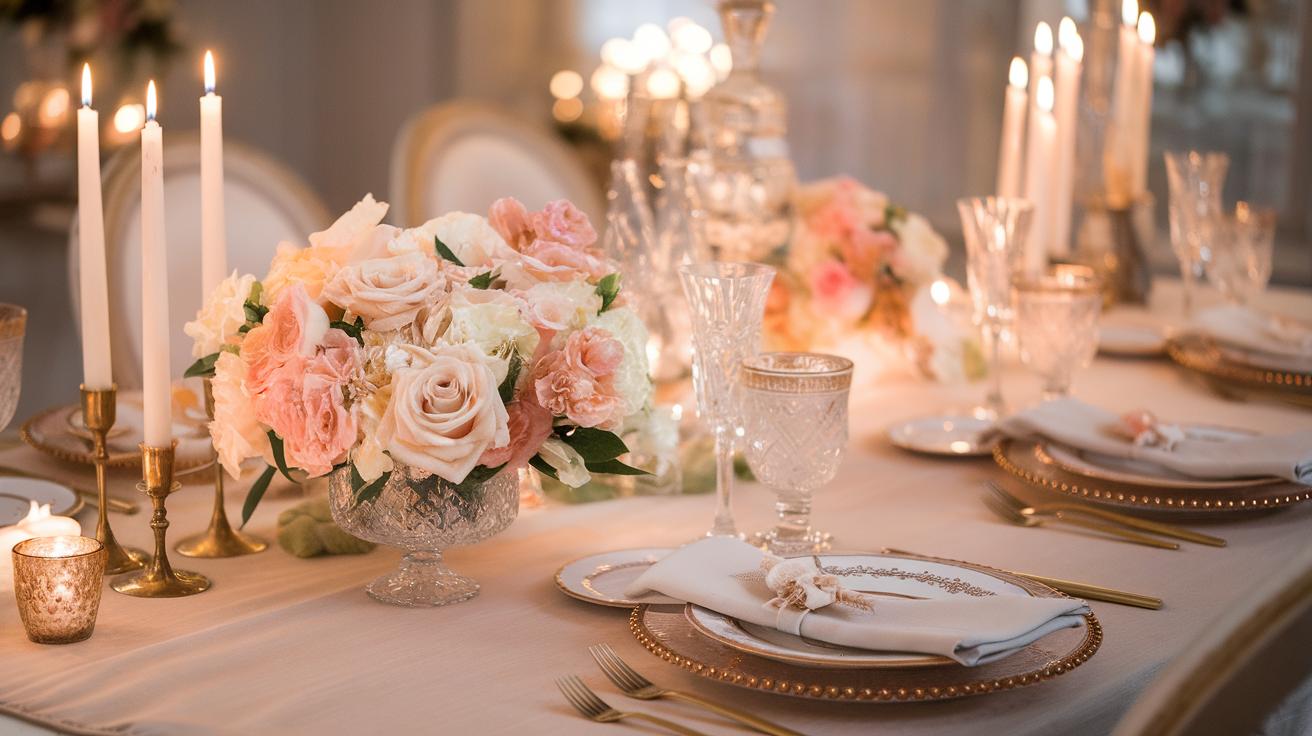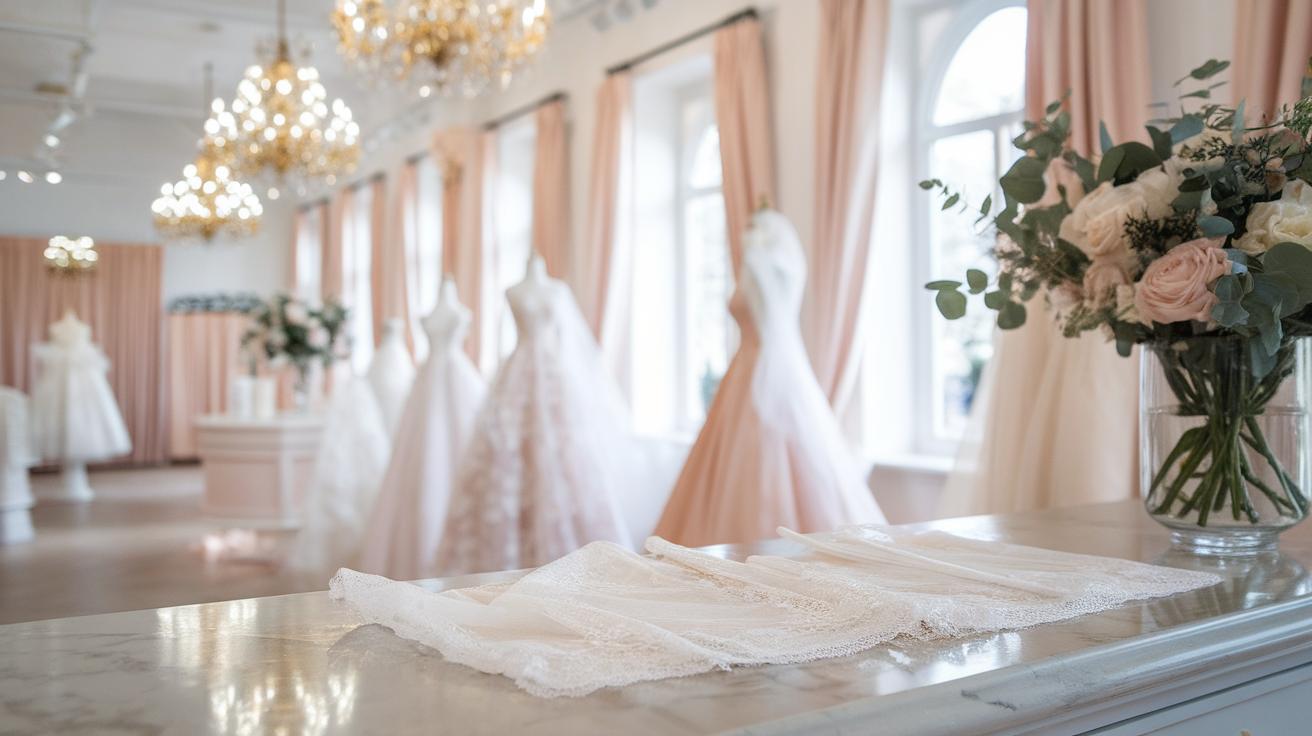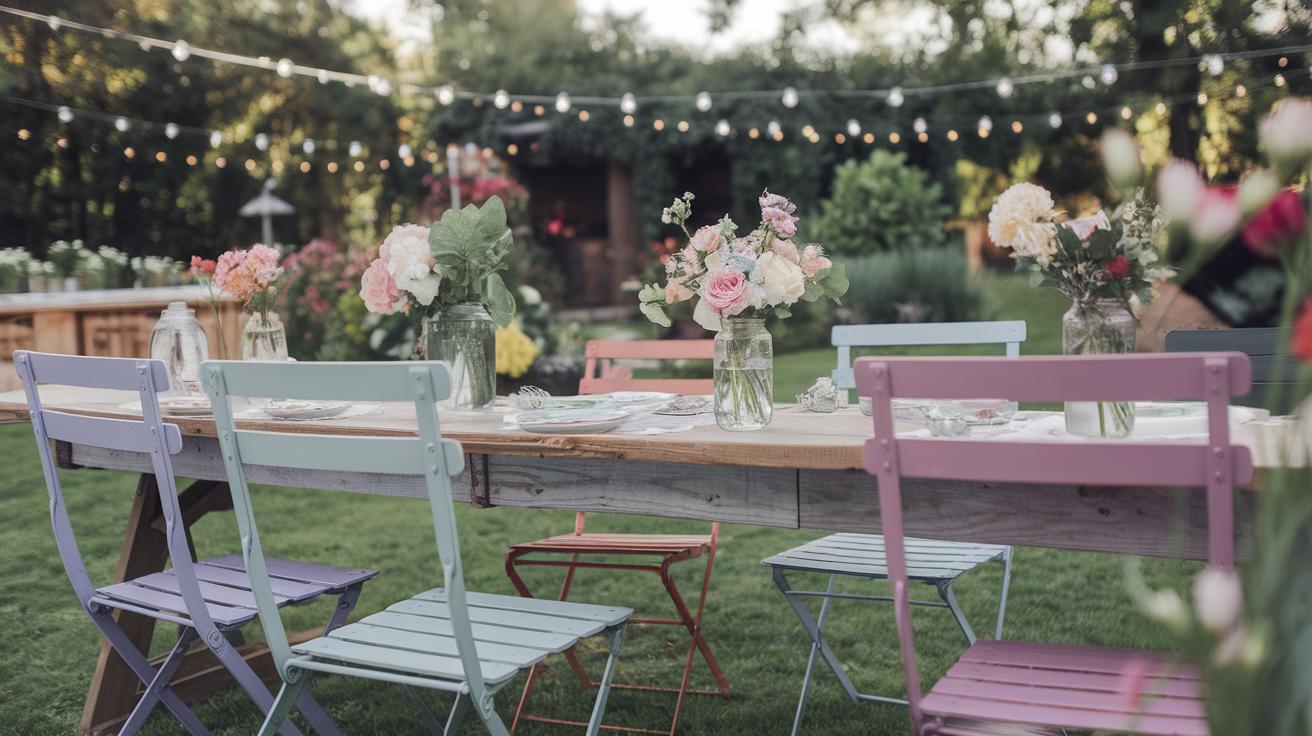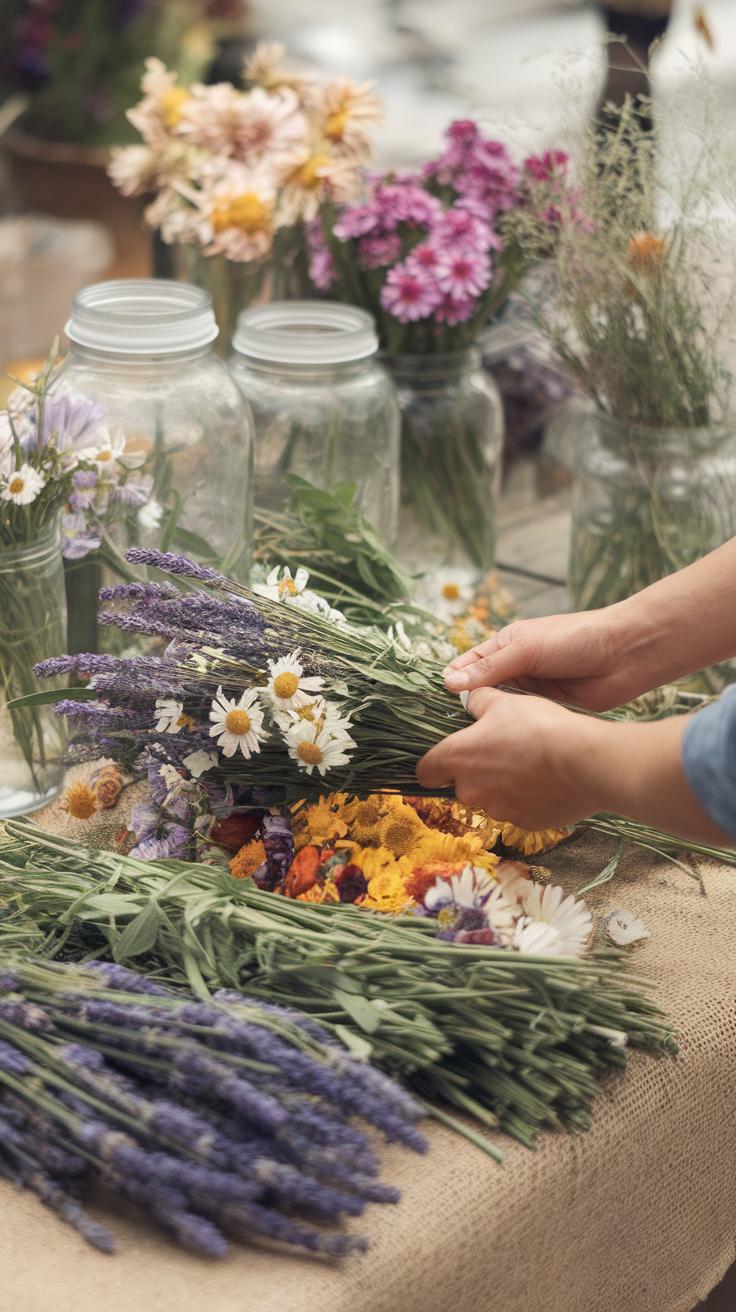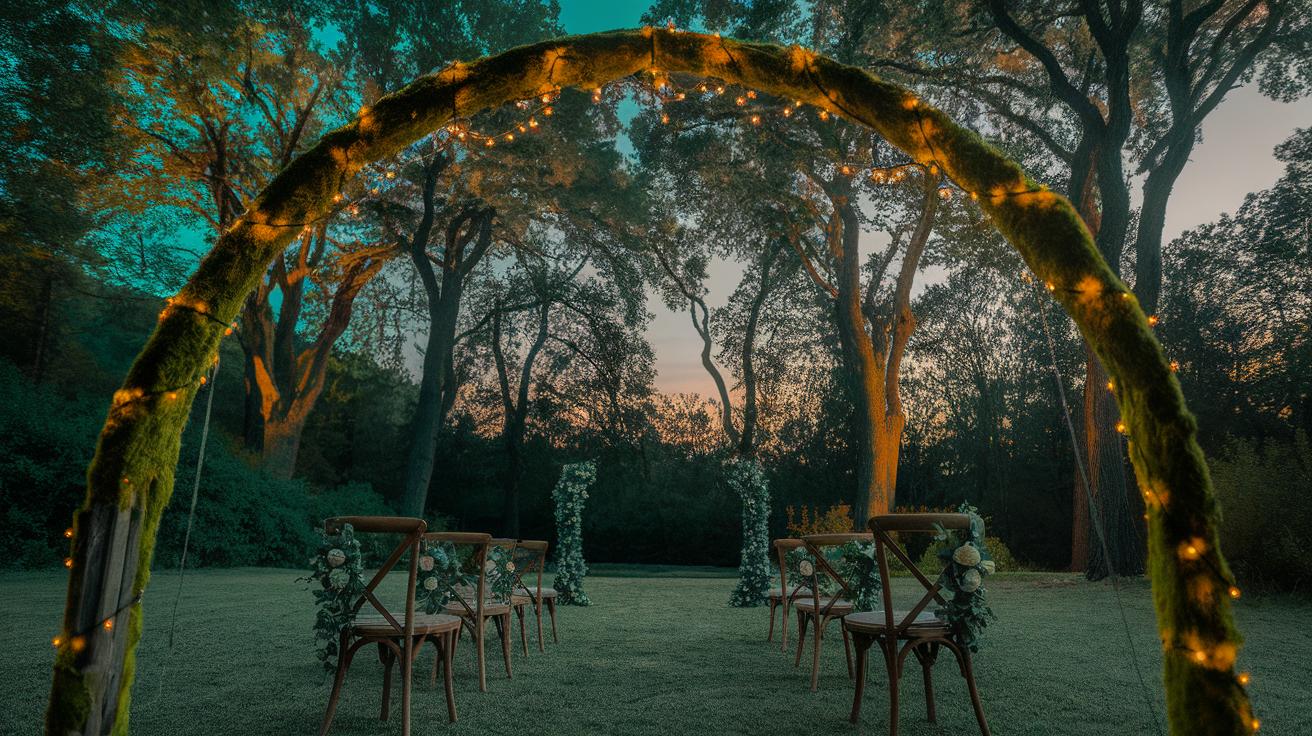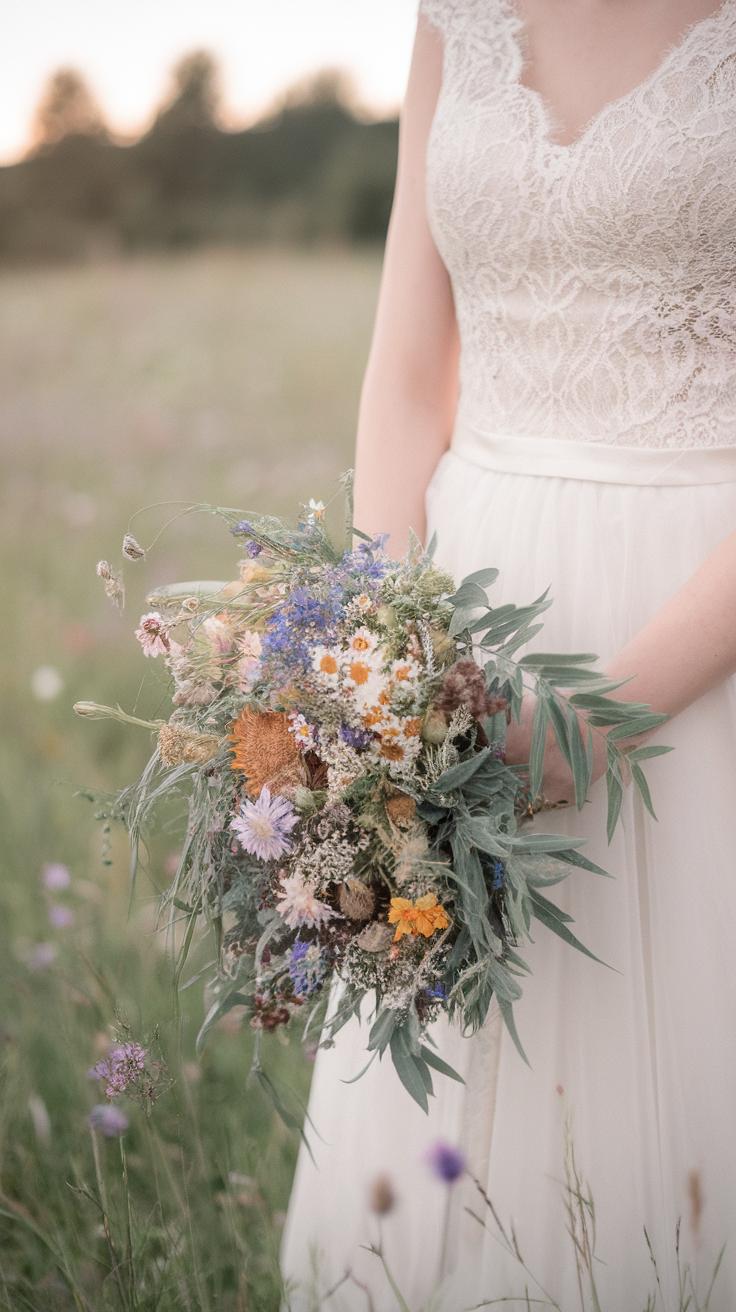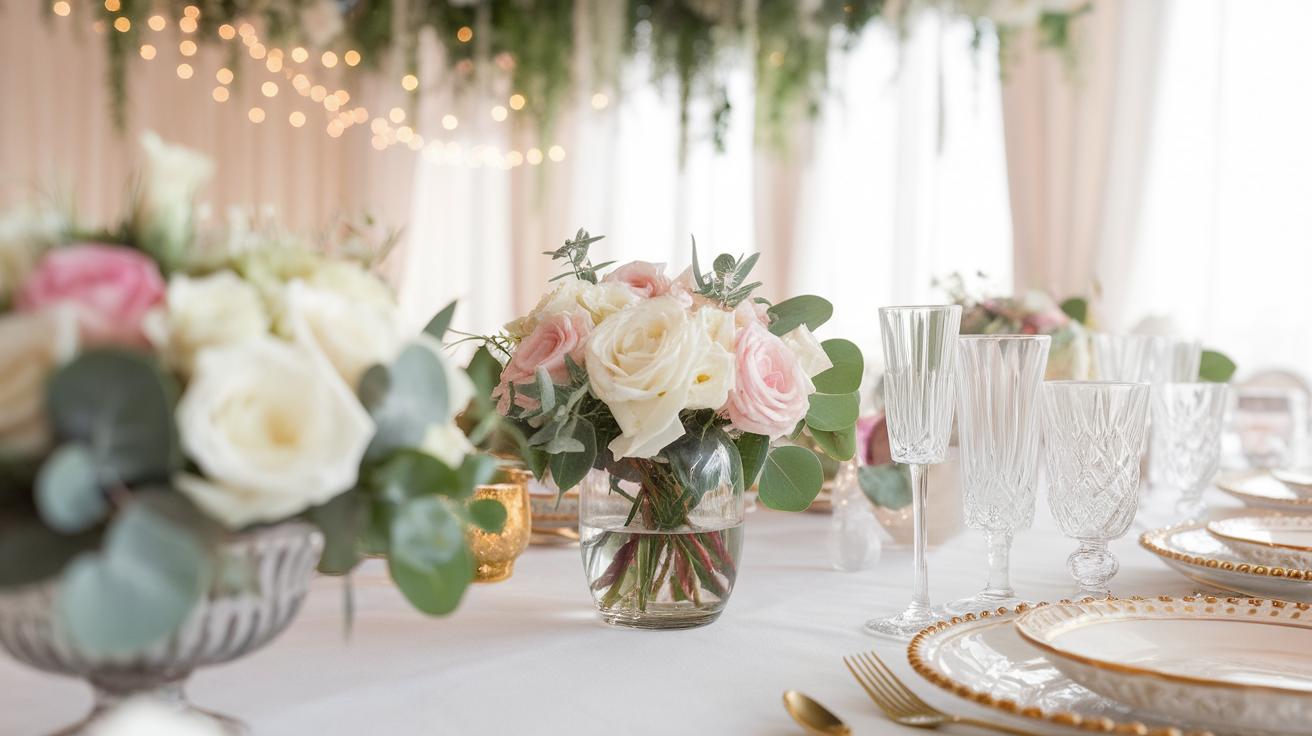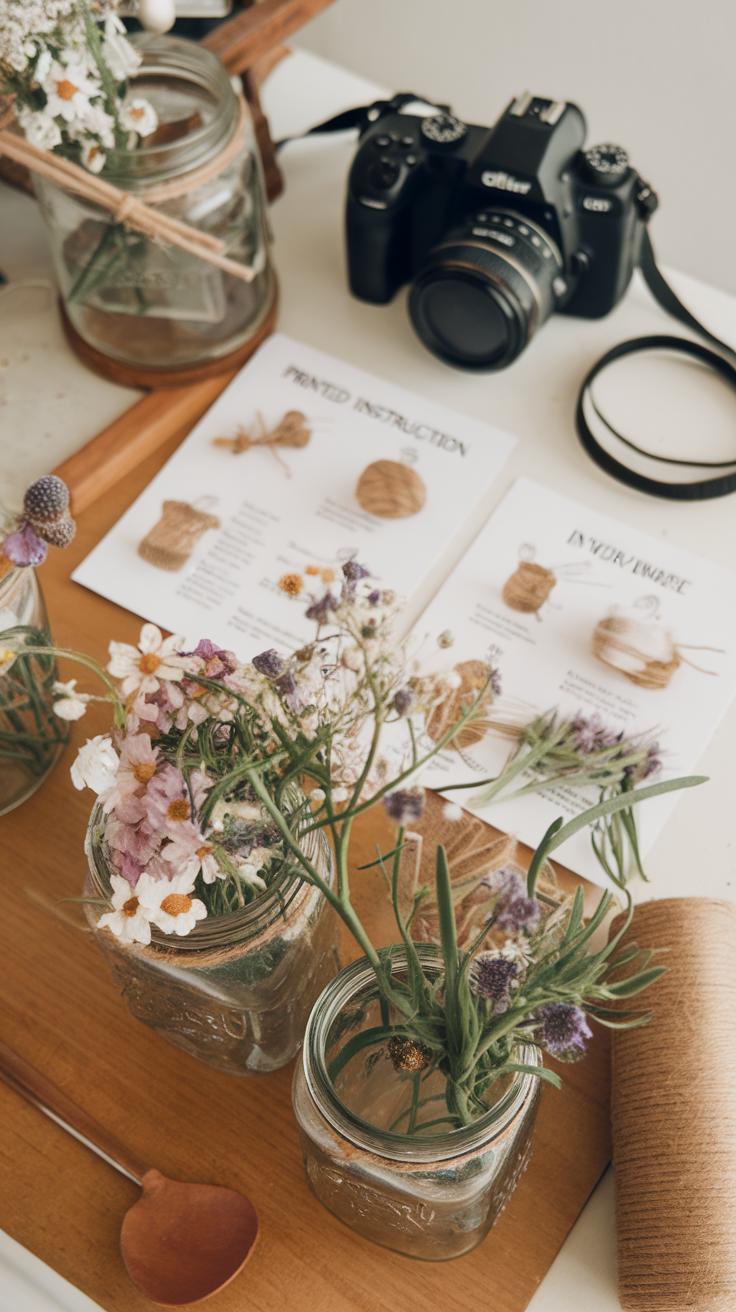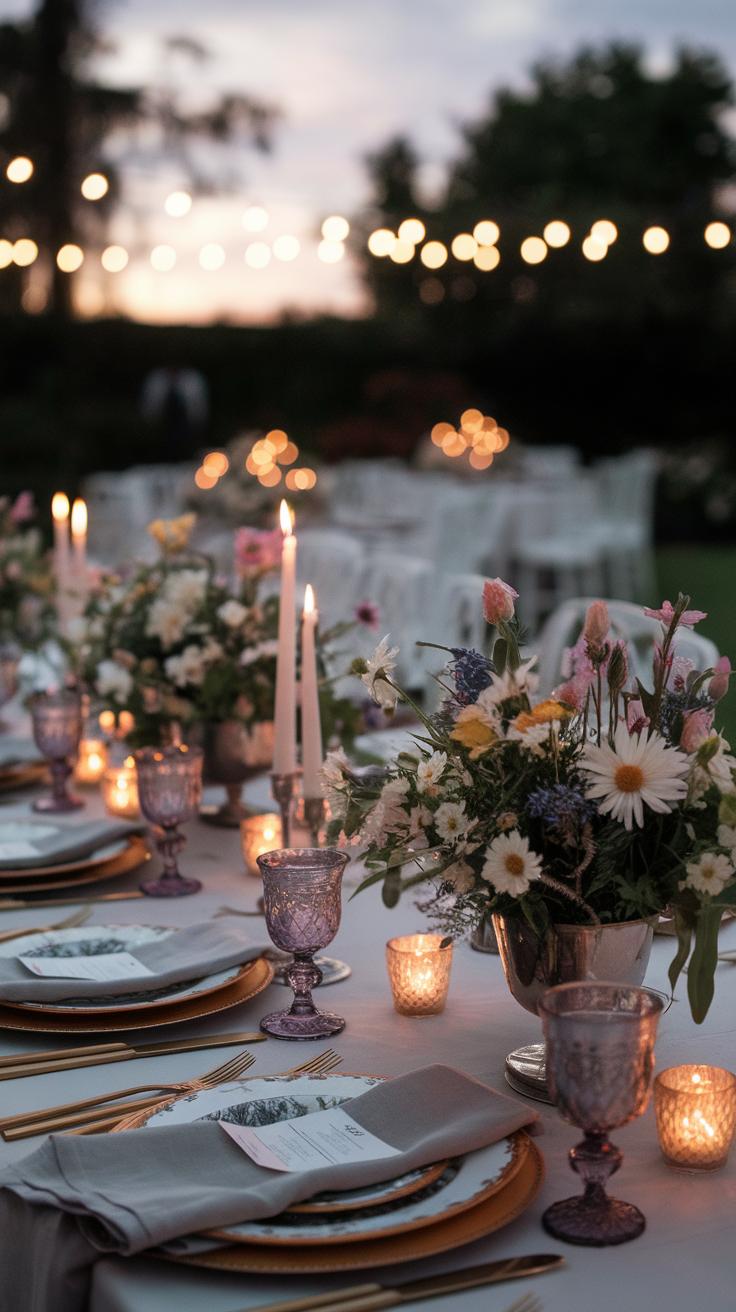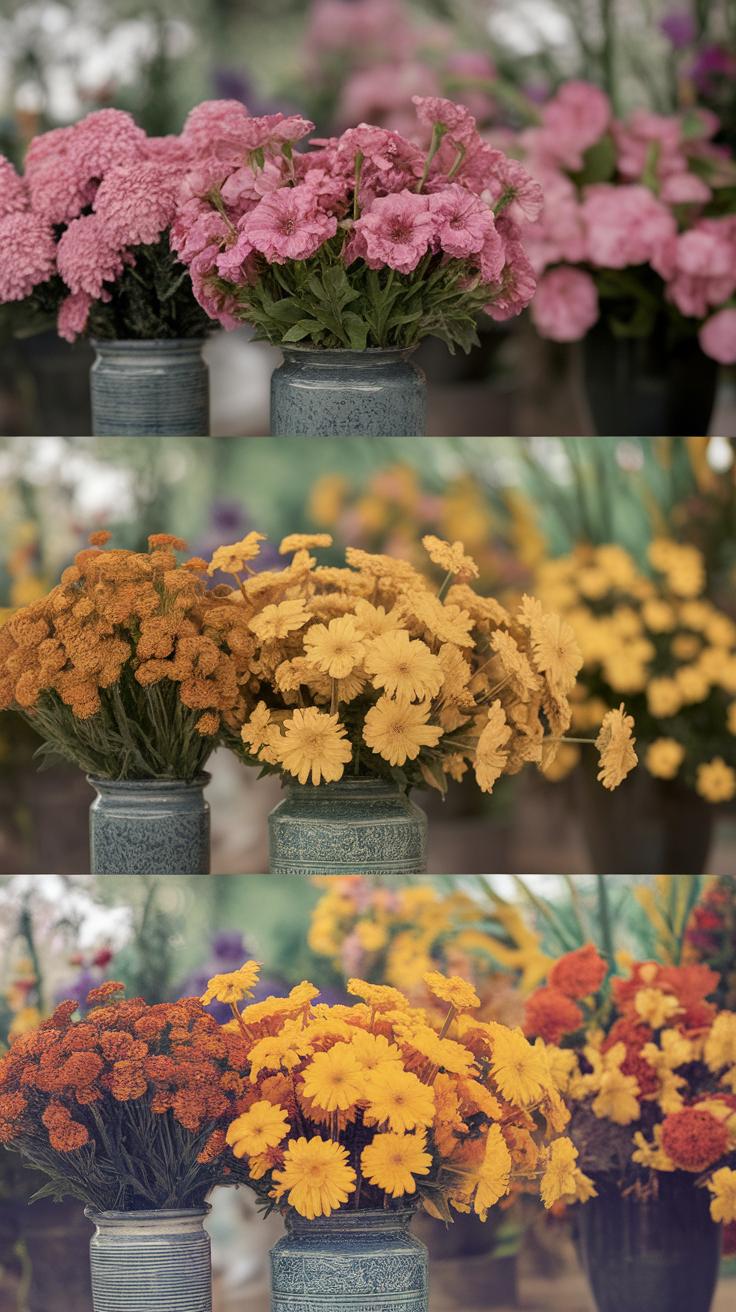Introduction
Wildflower weddings offer a natural and relaxed alternative to traditional wedding celebrations. Using wildflowers in your ceremony and reception can add authentic beauty and simplicity to your special day. Wildflowers are native or naturalized flowers that grow without human cultivation. Their unique appearance helps create a distinct and personalized ambiance for weddings in outdoor settings or rustic venues.
Many couples choose wildflowers to connect more deeply with nature, save on floral costs, and introduce sustainability into their wedding plans. You can highlight your creativity with wildflower arrangements in bouquets, centerpieces, and decorations. This article shares inspiring wildflower wedding ideas and practical tips so you can design a meaningful and memorable celebration filled with natural charm.
Understanding Wildflowers and Their Appeal for Weddings
Wildflowers grow naturally without human care, thriving in meadows, forests, and fields. Unlike cultivated flowers grown in controlled gardens, wildflowers often come from native or naturalized species that adapt to their local environment. This gives them a casual and authentic look that differs from the uniform shapes and colors of cultivated blooms.
Their imperfect shapes and variety create a relaxed, organic feeling in wedding decor. Wildflowers symbolize simplicity and natural beauty, making them perfect for couples who want their celebration to reflect genuine connection to nature. Choosing wildflowers can also carry regional meaning through native species, linking your wedding to the local landscape and season.
You might ask: what draws couples specifically to wildflowers rather than traditional floral arrangements? Many see wildflowers as a way to bring down-to-earth charm and unpolished elegance into their special day.
Wildflower Characteristics and Types
Wildflowers vary widely by region but include well-known native plants like black-eyed Susans, coneflowers, and Queen Anne’s lace. Many naturalized plants, such as poppies and daisies, also fit the wildflower style even if they originated elsewhere.
Choosing flowers that bloom during your wedding season helps keep arrangements fresh and reduces your environmental footprint. Spring weddings might include trilliums or lupines, while summer ceremonies could showcase sunflowers or wild roses.
Knowing which wildflowers thrive locally and when they bloom lets you plan your decor with realistic expectations. This also helps florists source flowers that reflect the time and place of your event, making your wedding more authentic and sustainable.
Why Choose Wildflowers for Your Wedding
Wildflowers connect you with nature in a way cultivated flowers may not. Their simple elegance creates a relaxed atmosphere that suits many wedding styles, such as rustic, boho, and garden themes. They bring color and texture without demanding a strict design.
Cost is another key reason couples choose wildflowers. They often cost less than specially grown blooms because they don’t require intense cultivation. This allows you to spend your budget on other details that matter to you.
Choosing wildflowers lets you add personal meaning to your wedding. Are you drawn to the honesty of native plants, or the carefree charm of natural meadows? Your choice can reflect your values and story.
Planning Your Wildflower Wedding Theme
Choosing the right venue sets the foundation for your wildflower wedding. Look for places like gardens, meadows, or rustic barns that naturally support the wildflower aesthetic. These locations offer a relaxed, organic feel that pairs well with unstructured floral arrangements and simple decor.
Select dress styles that reflect the ease and natural beauty of wildflowers. Flowing fabrics, soft lace, and vintage-inspired designs complement this theme. Keep your color palette earthy and soft, using greens, yellows, soft pinks, and lavender to echo the colors found in wildflower fields.
Design your decor to highlight the quiet charm of wildflowers. Use natural textures like wood, burlap, and linen to keep the look grounded. Avoid overly formal or modern pieces that might clash with the simplicity you want to achieve. How can you make each detail feel connected to nature’s effortless style?
Picking a Venue that Enhances Wildflower Beauty
Outdoor spaces like meadows and gardens offer natural beauty that enhances your wildflower theme. Sunlight filtering through trees and open skies create ideal settings for photos and memorable moments. Barns and rustic farms provide structure but maintain a countryside charm that fits the wildflower style.
Ask yourself which natural elements you want in your photos. Rolling hills, fields bursting with flowers, or wooden fences can all add to the mood. Consider the season and how different venues showcase wildflowers and greenery at their best. Can your venue offer a natural backdrop that reduces the need for extra decorations?
Designing a Cohesive Wildflower Theme
A strong wildflower wedding look starts with matching your attire to your setting. Choose bridesmaid dresses and groom’s attire in soft, natural tones that reflect the colors of your wildflowers. Invitations can echo this by using botanical prints or letterpress on textured paper.
Table settings should combine rustic elements like wooden chargers or mason jars with fresh wildflower centerpieces. Balance is key—too many different flower types or colors can feel busy. Select a few key wildflower varieties and repeat their colors and shapes throughout the decor.
Think about how textures come together. Pair rough burlap with delicate lace or smooth wood with airy flower arrangements to create visual interest. What small details can tie every part of your wedding into a united theme that feels fresh but organized?
Wildflower Wedding Decorations and Arrangements
Design your wedding decor using a mix of wildflower varieties and greenery for a natural, relaxed look. Start with bouquets that combine soft blooms like daisies, lavender, and Queen Anne’s lace. Add sprigs of greenery such as eucalyptus or ferns to fill in spaces and add texture.
Boutonnieres are simple to make by pairing one or two small blooms with a touch of greenery and wrapping the stems with twine for a rustic feel. For centerpieces, cluster wildflowers in mismatched mason jars or tin cans to keep the informal vibe. Include local flowers that suit the season to keep costs down and support sustainability.
Aisle decorations can be created with small flower bundles tied to chairs or hung in vintage bottles along the path. Ceremony arches look stunning when draped with greenery and wildflower garlands, giving your ceremony a fresh and inviting frame.
Keep wildflowers fresh by trimming stems regularly and placing arrangements in clean water. Avoid overcrowding flowers in containers to prevent wilting. Have you considered how simple care routines can extend your flowers’ lifespan on your big day?
Creative Bouquets and Floral Arrangements
Creating a wildflower bouquet starts with choosing a variety of shapes and sizes. Include tall stems like snapdragons with round blooms such as poppies or daisies to add depth. Aim for an unstructured look by assembling flowers loosely and mixing colors naturally.
Begin by grouping your flowers by type. Use larger flowers for the bouquet’s center and work outward with smaller, delicate blooms and greenery. Tie the stems tightly but leave room for movement to keep a fresh appearance.
Boutonnieres pair well with single blooms or tiny clusters supported by a leaf or two. Wrap stems with natural twine or thin ribbon matching your wedding colors. Have you experimented with combining wildflowers that grow near your venue for a truly local bouquet?
Decorating the Venue with Wildflowers
Wildflowers bring charm to centerpieces, garlands, hanging installations, and aisle markers. Create centerpieces by filling clear glass jars with seasonal wildflowers and trimming stems to varying heights. Save on cost and waste by using recycled containers or thrifted vases.
Garlands made from intertwined wildflowers and greenery can decorate tables, arches, or mantels. Using twine supports a lightweight design that suits outdoor settings well. For hanging installations, knot flowers into rustic hoops or weave them into ceiling displays to add vertical interest.
Mark aisles with bunches of flowers tied to chairs or set in small pots along the path. Leftover blooms can be repurposed in guest bouquets or donated to a local hospital or nursing home, allowing your flowers to continue spreading joy after your wedding.
Sourcing and Selecting Wildflowers for Your Wedding
Finding the right wildflowers starts with understanding what grows near you. Local wildflower farms often provide fresh, seasonal blooms that suit your area’s climate. Contact these farms early to check availability and place orders. Florists who focus on native flowers can suggest beautiful, hardy options that reflect your region’s character. Think about the time of year you plan to marry. Seasonal changes affect which wildflowers thrive and bloom. Planning your wedding around peak wildflower seasons ensures your arrangements last longer and look vibrant. If you choose to gather flowers yourself, learn about local species and identify safe locations. What mood do you want to create with your flowers? Bright summer blooms or soft spring petals can shape the feeling of your day.
Working with Florists and Growers
Speak openly with your florist about your wildflower ideas. Ask if they have experience with native or wild blooms. Show photos or samples to help them understand your vision. Discuss which flowers bloom during your wedding month and how to care for them. Clarify the style you want—natural and loose or artfully arranged. It helps to set clear expectations on delivery times and flower freshness. Good florists will guide you toward seasonal choices and suggest flowers that hold up well during your event. Planning this way makes sure the flowers look as you imagine when the ceremony begins. Have you asked if your florist can source directly from growers or farms to keep your look authentic?
Responsible Foraging and Sustainability
Foraging wildflowers can add authenticity, but it requires care to protect nature. Only pick flowers from areas that allow harvesting and avoid endangered species. Take small amounts without uprooting plants to keep the environment healthy. Avoid sensitive habitats like wetlands or protected wildlife zones. Use gloves and scissors to prevent damage to other plants nearby. If you want a sustainable wedding, plan for flowers that grow back quickly or plant seeds after your event. Leave some blooms behind so pollinators continue to thrive. How will your foraging choices respect the balance of the local ecosystem? Consider also mixing foraged flowers with farm-grown blooms to reduce your impact.
Incorporating Wildflowers into Wedding Attire
You can add wildflowers to your wedding attire in many charming ways. Floral crowns and hairpieces offer a natural and fresh look for the bride and bridesmaids. Boutonnières made from wildflowers bring a subtle yet beautiful touch to the groom and groomsmen’s outfits. Consider adding small floral accents, such as flower pins on belts or delicate blooms on shoes, to connect the entire wedding theme.
Select flowers that match your bouquet and overall wedding color scheme. For example, if your bouquet includes lavender and daisies, use similar blooms in your hair accessories and boutonnières. This creates a consistent, harmonious look while keeping the natural feel. Have you thought about how the size and color of your wildflowers will affect your outfit? Smaller blossoms often work best for delicate dress embellishments, while larger flowers make a bold statement in hairpieces.
Wildflowers can enhance your attire without overpowering it. Choosing the right placement and variety ensures you highlight nature’s beauty in a practical and stylish way.
Floral Crowns and Hair Accessories
Flower crowns made of wildflowers bring a soft, romantic touch to bridal hairstyles. You can create crowns from tiny blooms like baby’s breath mixed with colorful poppies or daisies for a gentle burst of color. Match your crown style with your hairstyle: wear loose waves with a fuller crown or a sleek bun with a small, simple headpiece.
Bridesmaids’ hair accessories should complement the bride’s crown without repeating it exactly. Smaller flower combs or delicate sprigs pinned into braids work well. Think about your dress style when choosing hair decoration—vintage lace looks great with dainty, scattered wildflowers, while boho or rustic gowns pair nicely with fuller, earthier flower crowns.
Will you wear your crown slightly forward for a fairy-tale look, or off to the side for a modern twist? Keep your wildflowers fresh and lightweight to maintain comfort throughout the day.
Boutonnières and Other Floral Touches
Wildflower boutonnieres offer a simple, effective way to tie the groom and groomsmen into the wedding’s floral theme. Use small blossoms, like clover, chamomile, or sprigs of lavender, paired with greenery to create natural, textured designs. Wrap stems with twine or a thin ribbon matching the bride’s bouquet for a unified feel.
Beyond boutonnieres, consider adding subtle wildflower touches to shoes, belts, or even cufflinks. A tiny bloom glued or pinned on the heel of bridal shoes adds a sweet secret detail. Flower accents on belt buckles can give the groom a unique connection to the natural theme. These small elements reinforce the presence of wildflowers without overwhelming your overall look.
How will you personalize these details to reflect your personality and wedding style? Choosing meaningful wildflowers with personal significance can make these touches even more special.
Wildflower Wedding Photography Tips
Capturing the charm of a wildflower wedding starts with understanding your setting. Look for moments when natural light softens the scene, such as early morning or just before sunset. These times highlight the colors and textures of wildflowers without harsh shadows. Position your couple near floral arrangements or fields of flowers to frame your shots naturally.
Use close-ups to focus on the intricate details of bouquets and floral crowns. Capture candid moments like laughter or a gentle touch among the petals to tell a genuine story. For posed shots, ask the couple to interact with flowers, like gently touching petals or walking through a wildflower patch. This draws attention to the floral theme while keeping the images heartfelt.
Consider the background carefully. Avoid clutter by choosing open spaces with clear views of greenery or sky. Timing matters: plan photography around weather and light changes to keep the flowers vibrant. How can you make each photo show the unique romance found in your floral setting?
Using Natural Light and Outdoor Settings
Natural light brings out the true colors of wildflowers and enhances your wedding portraits. Shoot during the golden hours, just after sunrise or before sunset, when sunlight is soft and warm. This light wraps subjects in a gentle glow and avoids harsh contrasts.
Place your couple in open shade or near reflective surfaces like light-colored walls to bounce light evenly on faces. Outdoor settings such as meadows or gardens provide a natural backdrop that complements wildflower themes. Use wide apertures to blur these backgrounds slightly, making flowers stand out while keeping your subjects sharp.
Look for spots where flowers frame the couple or create natural arches. These make your images feel immersive. What outdoor settings around your venue highlight wildflowers best under natural light?
Creative Photo Ideas with Wildflowers
Try capturing the small touches that make wildflower weddings special. Take close-up shots of bouquets to show texture and color variation. Use slow shutter speed to photograph flower petals as they fall during a toss, freezing delicate moments.
Encourage the couple or guests to pick and hold single blooms, providing natural props for portraits. Capture interactions with the environment, like stepping through fields or leaning against trees with wildflower accents. These show relaxed, natural movements tied to the floral theme.
Explore angles like shooting up from below to highlight tall flowers or from above to create floral patterns on the ground. How can you use wildflowers beyond typical poses to tell a fresh, personal story in your photos?
BudgetFriendly Wildflower Wedding Strategies
You can create a beautiful wildflower wedding without spending too much. Try mixing wildflowers with plenty of greenery. This adds volume and richness while keeping costs down. Seasonal flowers usually cost less, so choosing blooms that are naturally available during your wedding time saves money.
Think about arranging your own flowers. DIY flower arrangements let you control costs and add a personal touch. Gather a variety of wildflowers and greens, then arrange them simply in mason jars or wrapped in twine for a rustic look.
Look beyond fresh flowers. Dried wildflowers give a charming, lasting option and can be bought in advance. Potted plants also serve as unique decorations that guests can take home or you can reuse later. Such options stretch your budget and keep the connection with nature strong.
DIY Floral Projects for Savings
Making your own wildflower centerpieces, bouquets, and decorations reduces costs and adds personal charm. Start with simple tools: scissors, floral tape, and jars or vases you already have. Pick flowers that hold up well without water for easier handling.
Cut stems at an angle and remove lower leaves to keep arrangements fresh longer. Combine different flower heights and textures for a natural look. Tie stems with ribbon or twine to finish bouquets. For centerpieces, cluster small groups in several containers instead of one large arrangement to save money and create a relaxed feel.
Practicing your designs a few times before the big day helps you get comfortable and avoid waste. Could you turn flower arranging into a fun group activity with friends or family? It’s a great way to prepare together and save on hiring a florist.
Choosing Cost-Effective Flower Options
Selecting inexpensive wildflower types is key for staying on budget. Consider daisies, baby’s breath, clover, and Queen Anne’s lace. These flowers often cost less but still bring natural beauty. Pair them with simple greenery like eucalyptus or ferns to make arrangements look fuller.
Rather than elaborate bouquets, embrace loose, hand-tied styles that require fewer blooms. Using more greenery than flowers keeps arrangements light and fresh. Check local farms or markets for seasonal wildflowers. Buying in bulk usually lowers price per stem compared to florists.
Ask yourself which flowers truly reflect your style without driving up costs. Could native wildflowers from your region provide a more affordable, eco-friendly choice? Balancing beauty with budget gets easier when you think about what works naturally for your location and season.
Combining Wildflowers with Other Wedding Elements
Wildflowers bring a natural feel that can tie many parts of your wedding together. When you plan carefully, these blooms add charm beyond just the bouquets. Look for ways to match wildflowers with other details like stationery, table settings, lighting, and even food displays. This helps your theme flow smoothly from start to finish.
Think about the colors and patterns in your flowers. Use those tones in your invitations and signs to create an inviting introduction to your day. On your tables, let wildflower arrangements stand out by choosing simple linens and organic textures. Soft lighting enhances the scene without taking away from the flowers’ fresh look. Consider string lights or candles that highlight petals and stems.
Wildflowers can also inspire your menu. Place edible flowers on plates or decorate desserts with small blossoms. This keeps your theme consistent and surprises guests with subtle beauty. How can you make every detail echo the natural grace of wildflowers without overwhelming your space? Finding this balance will make your wedding feel calm, connected, and memorable.
Matching Stationery and Decor
Select invitations and signage that show wildflower shapes, colors, or prints. This sets your theme before guests arrive. Pick paper textures that feel earthy, like recycled or kraft paper, which blends well with a wildflower look. Choose fonts that are clean and simple, avoiding styles that feel too modern or stiff.
Use watercolor or hand-drawn wildflower designs to add personality without cluttering the page. Keep your color choices tied to the blooms you’ll feature, such as soft yellows, purples, or greens. Signs at the venue can carry this style too, on wood or chalkboards, highlighting wildflower names or directions. Coordinated stationery and decor create a unified and welcoming experience for everyone.
Enhancing Tables and Lighting
Let your table settings enhance the wildflower theme with minimal effort. Choose plates and napkins in neutral tones to keep focus on the floral arrangements. Simple wood centerpieces or mason jars filled with mixed wildflowers work well. Add sprigs of herbs like lavender or rosemary for a fresh scent that fits the mood.
Lighting should be soft and natural. Use string lights overhead or candles scattered around each table to create warmth and highlight flowers. Lanterns with flickering flames also add an inviting glow. Avoid harsh or colored lights that can overshadow the natural charm.
Ask yourself how you can use light to make your flowers shine. Good lighting makes petals glow and shadows dance, reinforcing the outdoor, relaxed feel of your wedding. These details make a big difference in how your guests experience the day.
Seasonal Considerations for Wildflower Weddings
Your choice of wildflowers can change a lot based on the season you plan your wedding. Each season offers different blooms and weather conditions, which shape your floral options and overall planning.
Spring weddings benefit from fresh, bright flowers and milder temperatures, letting you use flowers that bloom early in the year. Summer brings warmth and long days but also heat that might affect delicate flowers.
Fall allows you to use rich colors and dried flowers, fitting well with cozy and layered decor. Winter weddings often happen indoors, so you might rely on dried botanicals or hardy blooms, balancing warmth with style in your attire.
Think about how the season’s temperature and daylight affect your guests’ comfort. For example, light fabrics and breathable dresses suit warmer months, while layering and warm wraps work better for cooler days.
What flowers do you imagine for your special day? Consider how seasonal bloom schedules and weather help you pick flowers that stay vibrant and how your decor and clothing choices can make your wedding both beautiful and comfortable.
Spring and Summer Wildflowers
Spring and summer offer lively and colorful wildflowers that add freshness to your wedding. Common spring flowers include daisies, bluebells, and buttercups. Their bright colors brighten bouquets and centerpieces.
Summer wildflowers like lupines, poppies, and cornflowers bring bold blue, red, and purple hues. Use them in bouquets, flower crowns, or as table decor to create natural elegance.
Consider mixing soft pastels with vibrant tones for a balanced look. Attire can include floral accents, such as wildflower boutonnières or hairpieces, to complement nature’s palette.
Keep in mind summer heat when planning. Choosing flowers that stay fresh in sun and using shaded spots for your guests increase comfort. Could you add water stations or fans to keep everyone cool?
Fall and Winter Floral Options
Choosing flowers for fall and winter means focusing on late-blooming varieties or dried wildflowers. Goldenrod, asters, and strawflowers work well in fall, bringing warm yellow and purple shades indoors or outside.
Dried wildflowers like lavender, seed pods, and wheat add texture and last longer, especially suited for winter weddings. They complement rustic or vintage themes and hold up well in warm indoor settings.
Pair these flowers with rich fabrics like velvet or wool in your attire to balance cooler temperatures. You can also place candles or warm lighting near your floral decorations for added coziness.
Will you host your wedding inside or outside? Understanding the space impacts which flowers will thrive and how your styling can support seasonal weather while keeping your wildflower theme alive.
Conclusions
Wildflower weddings bring a fresh and genuine touch to wedding celebrations. Their natural appearance suits various venues and themes, especially outdoor and rustic settings. You can select wildflowers native to your region to emphasize local flora and create unique arrangements that fit your budget. Their versatility makes it easy to incorporate them in bouquets, table decor, and ceremony backdrops.
By choosing wildflowers, you express your personality and preference for simplicity and sustainability. Practical ideas like mixing wildflowers with greenery or seasonal flowers can optimize the visual effect and cost. You can achieve an enchanting and memorable wedding experience that aligns with your values and style. Why not explore how wildflowers can transform your special day into a celebration of nature’s own beauty?

